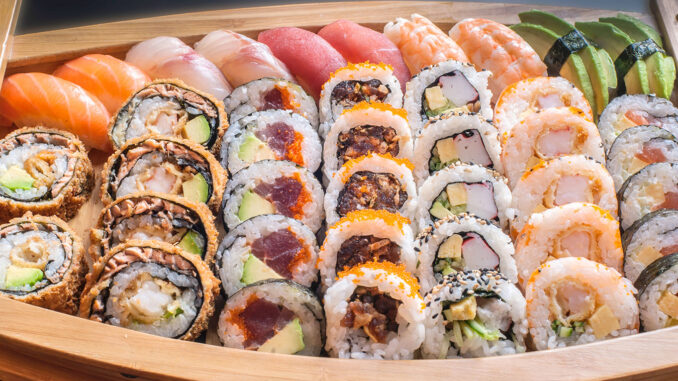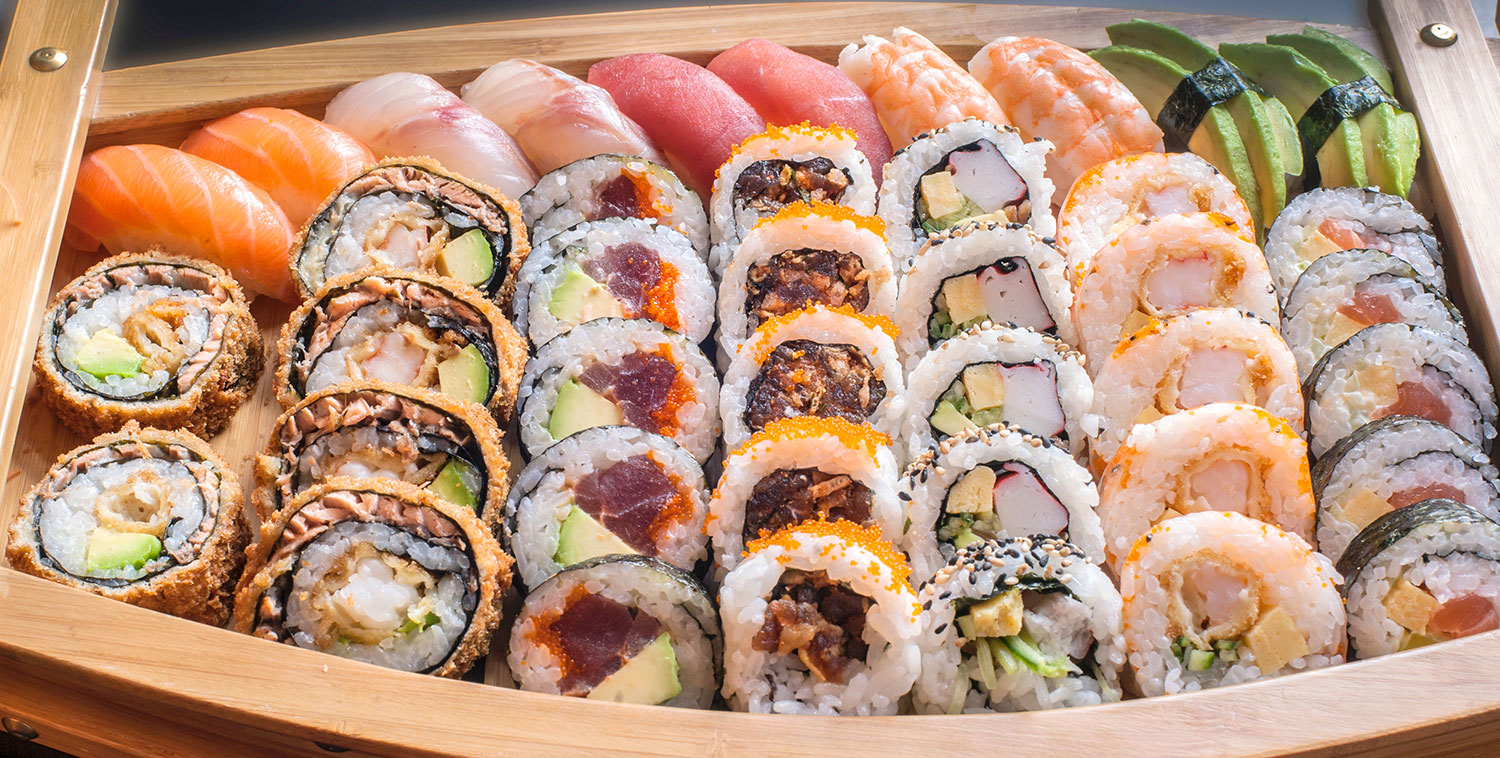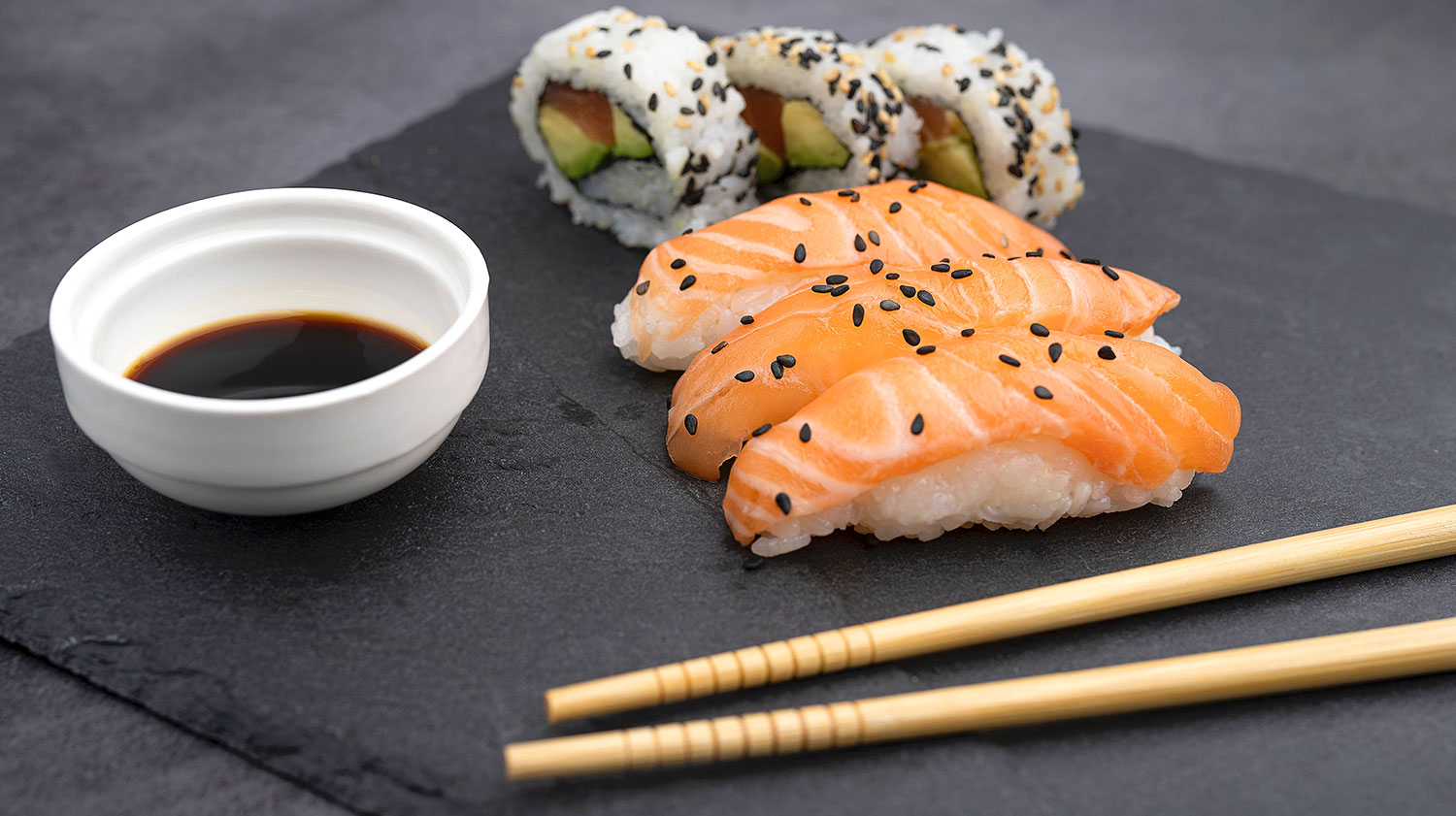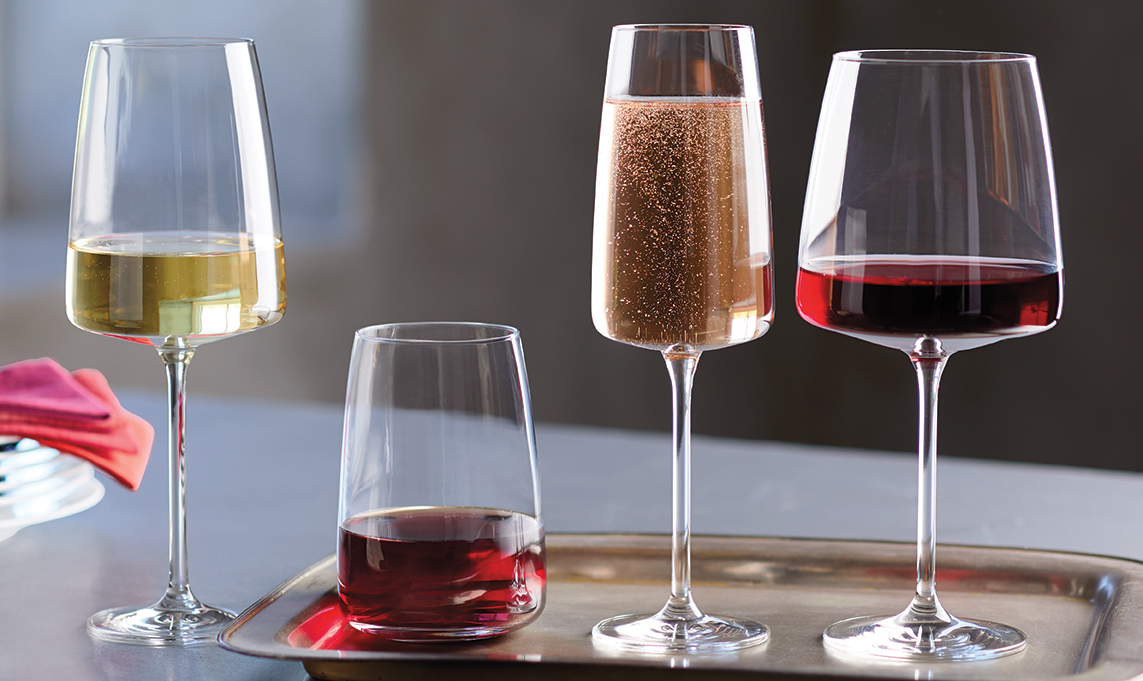
Wine is not commonly associated with this popular Japanese dish, because it is a challenge to balance the complex notes of sushi in a pairing.
The main elements are raw seafood and crustaceans, which have high sapidity. The light, fluffy rice mingles with spicy soy sauce and is often served with punchy wasabi. Seaweed is another delicious, but uniquely flavored element found in sushi.
Sushi and Sashimi

To better understand and discover the best combinations, let’s have a quick look into this delectable world.
Makizushi
Wrapped in a layer of dried, pressed seaweed (nori), this creates the classic cylindrical or cone shape. It’s variations include hosomaki (small rolls, with one type of filling), futomaki (larger, with two or three different elements), temaki (large and cone-shaped), and uramaki (rice on the outside, often known as the California Roll).
Inarizushi
This consists of a “pocket” generally made of fried tofu, cabbage leaves or a kind of omelette, with sushi filling.
Oshizushi
Instead of a roll, it is pressed to form a tile and cut into attractive slices.

Nigirizushi (Nigiri)
A block of pressed rice, usually covered with a slice of raw fish, is tied together with a thin strip of nori. When no rice is included, it is called Sashimi.
There are also variations of traditional sushi, which are difficult to find in restaurants outside Japan because they are based on fermented fish, such as narezushi and funazushi.
There are therefore few ingredients but many balances at stake, and pairing a wine becomes a complex operation.
Sushi Wine Pairing

Sauvignon Blanc
This wine has solid acidity, characterized by fresh floral and herbaceous aromas, which overcome salty flavors. With light body and moderate alcohol, it harmonizes well with most sushi flavors and eliminates the potential bitterness of soy sauce.
Gewürztraminer / Muscat Blanc/ Riesling
If you are a wasabi enthusiast, choose an aromatic wine. Gewürtraminer has a full body that is perfect for spicy food and sauces. Muscat Blanc is dry with high acidity, which is another excellent pairing.
Pinot Noir / Frappatio / Beaujolais / Barbera / Gamay
If you are a red wine lover, reach for a high acidity, low tannin wine such as Pinot Noir for an unusually pairing, especially with generous portions of soy sauce. The tannic wines such as Cabernet Sauvignon, Sangiovese or Nebbiolo will add an unpleasant metallic taste, so avoid “big reds”.
Dry Sparkling Wine
This classic combination of sushi with a bubbly like Champagne, Italian Franciacorta or a Spanish Cava will contrast the fatness and sweetness of raw fish, clearing the palate. Avoid sweeter sparkling wines like Proseccoor Dolce, which do not match the lighter structure of sushi. It is best to reach for a sparkling that went through second fermentation in a bottle, rather than using the tank method.
I hope this quick guide helps you with one of the most difficult pairings and gives you some fresh ideas. There are a few rules to follow to enjoy a good match between a dish and a bottle but you should never refrain from trying something new and creative.
“Stay hungry, stay foolish,” and stay thirsty.
About the author: Chiara Marchini is a professional Italian Sommelier and Bartender. She travels both in the old and new world to enrich her knowledge about wine and spirits taking part in events, tastings and harvests. From Europe to the Americas, from South Africa to Australia always from the vineyard to the glass and has always enjoyed writing about it.